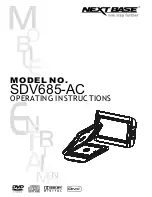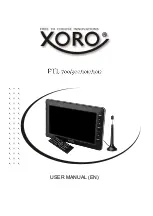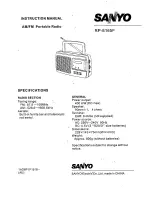
GENERATOR ASSEMBLY INFORMATION
BRUSH SET
Brush Type generators use a set of carbon or graphite brushes that are set into a spring loaded
brush holder, which house and support the brushes. This brush holder is mounted in such a way as to
allow the brushes to maintain a sliding electrical contact between the stationary and rotating components
of the generator. This connection enables DC current to flow from the Voltage Regulator through the
Brushes and into the Rotor assembly.
ELECTRONIC VOLTAGE REGULATION
Electronic Voltage Regulator (EVR) also referred to, as an Automatic Voltage Regulator (AVR)
is a very reliable device, which uses solid-state electronics to maintain voltage accuracy at ±2% of the
regulated voltage. The Voltage Regulator is designed to automatically regulate and maintain the
generated AC voltage through out the load range, that is from no load to full load.
ROTOR BEARING
The generator rotor assembly is suspended on a shielded factory lubricated ball bearing. A visual
inspection of the bearing is recommended at typical service intervals. If signs of abnormal wear or
leakage are observed, the bearing should be replaced.
Never use liquids of any kind to clean the generator end and bearing.
ROTOR BALANCE
The rotor assembly is precision balanced to a high degree of static and dynamic balance.
Although the balance will remain dynamically stable at speeds in excess of the design frequencies, the
prime mover should be adequately governed to prevent excessive over speed. High centrifugal forces
created by excessive over speed may damage the rotor windings and field coils.
VOLTAGE CONNECTION
The generator may be connected at the terminal board to deliver 120/240 volts to a 3 wire
grounded neutral system, or 120-volts only to a 2 wire distribution system. If any equipment requires
240-volts, then the 120/240-volt connection must be used. If all equipment requires 120-volts then
the 120-volt connection is preferred, even if two lines leave the same switch box. The two lines at
the inputs to the switch box are both connected to the un-grounded 120-volt lines from the generator.
The 120-volt connection enables the Electronic Voltage Regulator (EVR) to hold the voltage very
close to the 115 or 120 volts, as initially adjusted, regardless of the power distribution amount on the
different distribution lines. The 120-volt connection is recommended if the entire electrical load
requires only 115 or 120 volts.
Although the 120/240-volt connection may also be used when all loads requires only 110 volts, it
should be pointed out that this connection, the 240-volts, is regulated and the lightly loaded phase, or
line, will deliver a high line to neutral voltage and the heavily loaded phase will deliver a low line to
neutral voltage. The heavily loaded line may have such a low voltage that air conditioning will have
more difficulty in starting, and long starting lines may overload the generator and trip circuit breakers.
1
















































